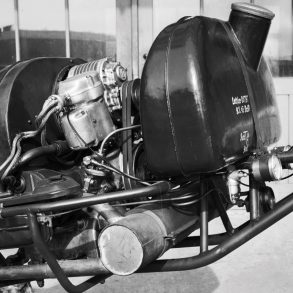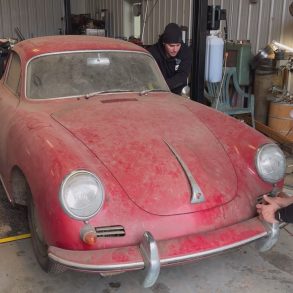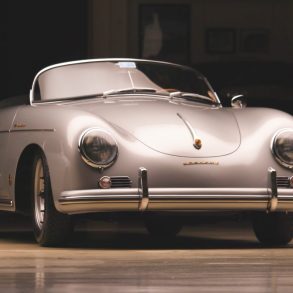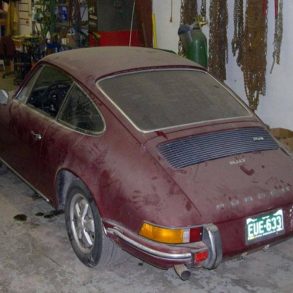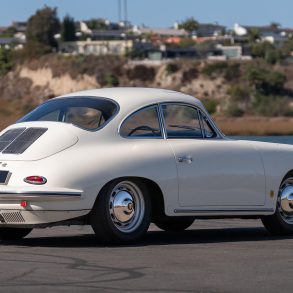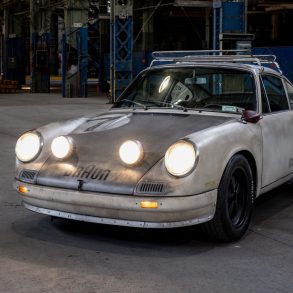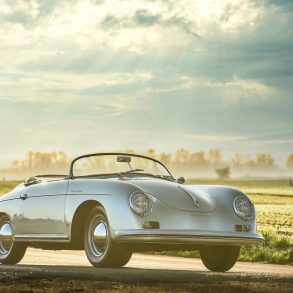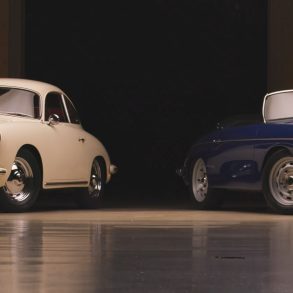Episode One: The Porsche 356 Summary
Welcome to The Audiobahn, the Stuttcars.com podcast focused on all things Porsche. In our first series, we’re exploring the history of venerable 911: its history, origins, achievements, and future. In our first-ever Audiobahn episode, we’re starting with where the 911 began: the Porsche 356.
Read the Podcast Transcript
B: Hi everyone and welcome to the Audiobond. Your Porsche podcast. My name is Brayden Clark and this is Chris Carnduff.
We take some of the really great material written on stuttcars.com and turn it into these informative, Porsche podcast episodes.
Over the next couple of weeks we’re going to be diving into the history of the 911, starting at the very, very beginning—even before that—and going through each series to find out exactly what makes this car so unique.
Chris are you ready to start?
C: Oh yeah I’m ready, are you ready?
B: I’m ready, let’s go.
C: All right, for those following at home, we’re gonna, I’m gonna read something off of this article to lead us in and the article is called The Guide to the 911: All the Porsche 911 Generations Explained. It’s tremendous work done by Nick Dellis, it goes through all the incarnations of the 911.
There’s this one really great paragraph that I think really does a great job of leading us into what we’re going to talk about today.
It says “the massive undertaking of replacing the 356 began as early as 1959 with Ferdinand Alexander Butzi Porsche, largely responsible for the project. By 1961 the first clay models were being made and in July of 1964 the first prototypes were being made. At the 1963 Frankfurt show, the public saw Porsche’s new direction.”
I love that paragraph because if you don’t know what’s going on there’s a ton to unpack and I think the first line does a really good job of telling us exactly what we need to unpack here.
It says “the massive undertaking of replacing the 356 began as early as 1959.” We’re here to talk about the 911, but like everything else, every other story in the history of history, it doesn’t start at the beginning of the thing.
The 911 didn’t just start in 1963. It didn’t start in 1959 either. It starts before that.
It is replacing the 356. So in order to understand the 911 we have to look even earlier and we have to understand, at least partially, the 356.
Today we’re going to be talking about the 356. The 356 came in a few different sub models. It began with what’s known as the pre-A models in 1948 and eventually went all the way in, by 1964-65, with the C models.
But we’re going to focus in a little bit more on the pre-A models and the B models today.
It was designed by Ferdinand Fairy Porsche and it was produced from 1948 to 1966. The pre-A models had a 1488 cc flat 4 engine. That’s about one-and-a-half liters for those at home—producing 70 brake horsepower and had a 0-60 of 13.8 seconds in 1948.
B: Which is impressive.
C: Which is very impressive and still had a two plus two configuration. The B models, which were now two sub generations later or two generations later, the B model had by this time three separate engine options, all of which were a flat four design still.
There was the one-and-a-half liter, almost 1600 cc, 60 horsepower option. There was a 1600 s engine, which produced 75 brake horsepower, and there was the 1600 super 90 engine, which produced 90 brake horsepower.
There was slight body design changes as well, but the biggest changes were lightweight alloy cylinders and upgraded carburetors.
So why do we care? Well we should care about the 356 and its development because I think it does a really, really good job of showing the spirit of Porsche, especially in those early days and what we’re going to see throughout the 70s as well and the 60s, especially when we talk about the 911 specifically.
Throughout the generations the 356 was constantly being upgraded.
Whenever they first came out with it in 1948, they weren’t making their own engines. All their engines were Volkswagen engines that they were putting in these and they were just boring them out more so they would have more power.
But eventually after a couple years, all of a sudden, they’re producing their own engines and they can put their own design into these things. And then they’re upgrading the heads on them, and they’re upgrading the cylinders, and they’re upgrading the compression, they’re upgrading and they’re boring them out even more to 1600 cc and they’re changing the cams to roller cams and—oh—then we can go to the carburetors and we can totally re-engineer the carburetors so we got way better flow in the Venturi, so really shooting gasoline into these things.
B: So it sounds like what the 356 was, was almost a playground, because it was around for a long time, it was a playground to get the basic ideas together of these are all the cool things we can do, let’s put them into something new.
C: Yeah I think that’s a really good way of putting it, but mind you, Porsche also had their playground on the racetrack. So the 356 was also an everyman’s car. That was the Porsche that you went and you bought. That was it.
Because Porsche was also making their race cars, which were totally different. They were front engine, rear-wheel drive designs, whereas the 356 was a rear engine design.
But the 356 was being constantly upgraded. The engineers didn’t ignore it. It may have been the every man’s car, but Porsche wasn’t, you know, they weren’t producing a million cars a year.
They were still very, very invested in what they were doing with each and every single model, which I think is just, I think it’s staggeringly cool.
When engineers get when engineers and designers get to come together and make these really, really beautiful cars, really effective cars and they get excited about what they’re making, we all benefit.
If you go through all of automotive history, the coolest cars that us enthusiasts get into are the cars that the engineers really poured their hearts and souls into, and the 356 was definitely this.
Eventually it gets replaced by the 911 and the question is why does it get replaced? And what I think is reasonable to say, after all those upgrades happen constantly, is to say that I think the Porsche engineers and designers—I think they looked at the 356 and went this is as far as we can take it and it’s time for a new playground. It’s time for a new platform.
I think it’s really reasonable to say. That isn’t to say that the 356 couldn’t have gone farther, you can always upgrade, you can always change the suspension geometry, you can always throw in a bigger engine, you can always upgrade materials and all that. That’s certain that happens with the 911 later on. The 911 changes a lot of those things from the 356 as well. But eventually, a platform does go as far as a platform can go and—all right it’s time to leave that aside, let’s move on to the new thing.
B: Taking all of the key learnings that we’ve gotten from it and putting it all onto a new platform.
C: Exactly. This is when of course we see another Porsche come into the fray. The 356 was designed by Ferdinand Fairy Porsche, Ferdinand Butzi Porsche comes in and designs the next Porsche.
B: Which wasn’t originally the 911, it was the 901.
C: You got it. As I have written down here, in this wonderfully put together script:
“And so Porsche decided to go in a new direction, to build a new base production vehicle to supplement their racing, to design and build the platform that they could upgrade on for the next 27 years: the 901”.
So next time we’re going to be talking about the 911 or the 901 and the hilarious naming everything that happens in those very, very early years of the 911.
B: Cool, but that’s a really good overview of the 356. What made it important, Who is involved and why you should care about it.
C: And why if you have a cool 75 – 100 thousand dollars you should totally get one. Because they still sell parts for it on the Porsche website, it’s great.
B: Yeah Porsche is really amazing because there’s still a back catalog for their stuff, they support their product and well beyond just supporting their product, they support their artistry, and I think that can’t be lost on us.
But again, I’m getting way ahead of myself.
B: All good.
C: We’re gonna get there.
B: We’ll get there.
B: Okay, that is our overview of the 356. Next episode we’re going to be diving into the 901 and the great, funny naming conventions that you’ve already mentioned.
So we look forward to talking to you guys then.
C: Get to explore the great Franco-German war of naming conventions.
B: So we look forward to talking to you guys then. We will see you next week. Take care.


